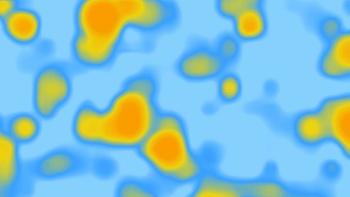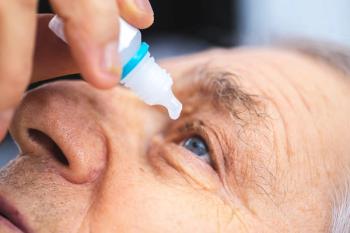
Rethinking what we know about glaucoma in 2019
Last year saw some of the first new innovations in topical glaucoma treatment hit the market with the introduction of nitric oxide in Vyzulta (latanoprostene bunod, Bausch + Lomb) and rho-kinase inhibitors in Rhopressa (netarsudil, Aerie).
Behind the scenes, these new additions to our treatment options reveal a bigger mindset change in what is happening in our scientific understanding of glaucoma as a disease process.
In this podcast, Jennifer Lyerly, OD, and Darryl Glover, OD, sit down with
Glaucoma treatment innovations
The last major innovations in topical glaucoma treatment occurred in the early 2000s when prostaglandin analogues hit the market, quickly becoming the new first-line treatment modality for open-angle glaucoma patients.
Why has it taken two decades for new innovations to enter the marketplace and for those new additions to be more adjunctive rather than full-scale replacement of prostaglandins?
Dr. Steel cites two major challenges facing researchers in the field:
• Lack of good animal models to study glaucoma as a process. Because the causes of glaucoma are multifactorial, mimicking and recreating the process that happens in this disease to study it in animals is inherently limited in its ability to capture the full complexity of glaucoma.
• Obtaining funding for research is increasingly difficult. In today’s healthcare marketplace, finding cures is essential to the financial bottom-line of companies investing in research. With glaucoma, where research is still trying to establish what is even happening in the disease, proposing a study that could find a cure for glaucoma is understandably far-fetched. But if studies modeling what happens in the glaucoma process can’t get funded, researchers and clinicians are left with the minimal knowledge they have now.
Role of TM
Early in her career, Dr. Steel focused on the anterior segment and the trabecular meshwork (TM) specifically.
TM cells are like no other cells in the body. They are derived from and shaped like endothelial cells, they but contract like smooth muscle cells. They act like macrophages; their innate phagocytic activity allows them to create a tissue that acts like a self-cleaning filter.
Scientists have known for years that the TM was an essential structure to unlocking a treatment breakthrough for glaucoma, even back in the early 2000s when prostaglandins were taking over the market. Prostaglanins analogues target only uveoscleral outflow, which is a much smaller pathway than flow of the aqueous humor through the TM.
In 2019, the working model of primary open-angle glaucoma is that dysfunction in the TM is a key cause of why intraocular pressure (IOP) increases to dangerous levels. The
Over our lifespan,
Key to our understanding of this process is an appreciation for the importance of the aqueous humor. The aqueous humor is a “blood surrogate” for anterior segment and TM tissue. As doctors, we know that the TM should not have blood vessels-if we see neovascularization of the tissue, it’s a sign of a significant concern.
Instead of getting oxygen and nutrients from blood, TM cells are supported with everything they need from the aqueous humor that passes through the tissue matrix. If the TM stiffens with excess extracellular matrix, less aqueous humor (and the vital oxygen and nutrients it carries) is passing through the system and can eventually lead to cell death. This is glaucoma.
IOP homeostasis
Historically, treatment options have been focused on lowering IOP, but in the future, Dr. Steel proposes that our focus may shift to how to restore IOP homeostasis and keep the TM tissue healthy and functional.
For example, knowing that aqueous humor is the nutritional supply to the anterior segment tissue, is suppressing aqueous humor production a safe long-term approach to glaucoma treatment and maintaining tissue health? In the future, treatment that focus on this suppression pathway may be relegated to more end-stage disease because we have better treatments to maintain healthy tissue in early disease intervention.
New treatment possibilities
New studies suggest innovative new treatment possibilities in glaucoma.
•
Why? Leafy greens are rich in nitrates, and higher dietary nitrates result in better vascular health and lower blood pressure. In addition to prescribing topical treatments, discussing nutritional and cardiovascular health is warranted for glaucoma patients. Treatments that increase nitric oxide or dietary nitrates may play a larger role in glaucoma management going forward, especially for patients with low or normal tension glaucoma.
•
References:
1. Goel M, Sienkiewicz AE, Picciani R, Wang J, Lee RK, Bhattacharya SK. Cochlin, intraocular pressure regulation and mechanosensing. PLoS One. 2012;7(4):e34309.
2. Acott TS, Kelley MJ. Extracellular matrix in the trabecular meshwork. Exp Eye Res. 2008;86(4):543-61.
3. Kang JH, Willett WC, Rosner BA, Buys E, Wiggs JL, Pasquale LR. Association of Dietary Nitrate Intake With Primary Open-Angle Glaucoma: A Prospective Analysis From the Nurses’ Health Study and Health Professionals Follow-up Study. JAMA Ophthalmol. 2016;134(3):294-303.
4. Cimberle M. Nicotinamide shows promise as neuroprotective treatment for glaucoma. Ocular Surgery News. Available at: https://www.healio.com/ophthalmology/glaucoma/news/print/ocular-surgery-news/%7Bd5ab4311-cea9-4379-a823-266b82ce321f%7D/nicotinamide-shows-promise-as-neuroprotective-treatment-for-glaucoma. Accessed 1/25/18.
Newsletter
Want more insights like this? Subscribe to Optometry Times and get clinical pearls and practice tips delivered straight to your inbox.








































